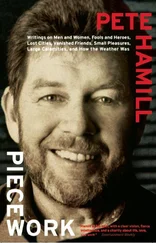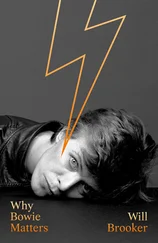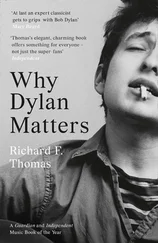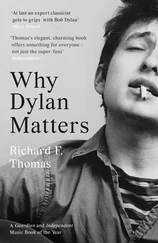Sinatra was drinking hard and smoking too much, and then drinking again. Failure stoked the fires of his rage and increased his need for alcohol; both increased his sense of personal dissolution. His artistic energies were also being exhausted by the fierce entanglement with Ava Gardner. Any love affair is a creative act, part imagination, part practice; often, it can lift an artist to new levels of exalted energy. But a doomed and tumultuous love affair, on the model of the Sinatra and Gardner coupling, can destroy creativity. For months their affair and marriage seemed to obliterate the basic optimism required by the romantic impulse, so essential to Sinatra’s art. The vision of earthly happiness, that elusive goal that calls forth so much lyricism, was being maimed by a corrosive cynicism.
While Sinatra’s career declined, Ava’s star shone more brightly. He began to resemble an adjunct to her career, following her to movie locations in Spain, England, Africa, and Mexico. They drank hard. They quarreled. They reconciled. Sometimes Sinatra did his drinking in the empty time when she was away making movies and he was trying to make an impact on television. But distance didn’t help him regain clarity or a sense of perspective. Instead, jealousy ate at his guts. In Clarke’s or Toots Shor’s in New York, in the haunts of a fading Hollywood, or in his own apartment (since he and Ava never did establish a home), he seemed to bounce off the walls, like a drunk who had stayed too long at a party.
But then, slowly, there was a shift. He tried, and failed, to get the part of Johnny Romano in the film of Willard Motley’s Knock on Any Door; the role went to young John Derek, whose impossibly perfect looks resembled an illustration from Cosmopolitan magazine. Sinatra, at thirty-four, was too old, but Johnny Romano’s motto was one that Sinatra might have felt deeply: “Live fast, die young, and have a good-looking corpse.”
After he was dropped by MCA, Sinatra moved to the William Morris agency and began focusing his attention on a novel by James Jones called From Here to Eternity. The book was a huge bestseller, a densely detailed story about soldiers based in Schofield Barracks in Pearl Harbor on the eve of the Japanese attack. All the characters, in one form or another, had been shaped by Prohibition and the Depression, but Sinatra focused on the role of a tough little Italian American named Angelo Maggio. “I knew Maggio,” Sinatra said. “I grew up with him in Hoboken.” Unlike Meet Danny Wilson, this was to be a major film, with a healthy budget; it would have what Sinatra liked to call “class.” It was to be made by Columbia Pictures, whose boss was the tough, vulgar Harry Cohn. The director was to be Fred Zinnemann. His High Noon the year before was a parable about McCarthyism that simultaneously breathed new life into the western and into the career of Gary Cooper, who won an Academy Award as best actor. Sinatra began to plead for a chance to play Maggio.
He had a little help from his friends. There is neither proof nor logic to Mario Puzo’s fictional version in The Godfather, where the Mob cuts off the head of a racehorse owned by the studio boss and deposits it in his bed, thus persuading the studio to give the part to a character based loosely on Sinatra. To be sure, Cohn knew Longie Zwillman, who had an affair with Columbia star Jean Harlow in the 1930s, and probably took loans from Zwillman in the lean days of the Depression. But Maggio was a minor part in a movie starring Burt Lancaster, Montgomery Clift, and Deborah Kerr. If the Mob had occult powers, why not get him the starring role? The myth endures. As Mario Puzo himself once said, fiction is the art of “retrospective falsification.”
The facts were more banal. Sinatra’s new agents were working hard behind the scenes. Sinatra himself pleaded with producer Buddy Adler for a chance to do a screen test. He also called Adler’s boss, Harry Cohn, who owed him a favor. More important, Ava interceded with Cohn’s wife, Joan, who put in a good word with her husband. Ava also met with Cohn himself, offering to make a movie at Columbia for nothing, if only he’d give Sinatra the part of Maggio. The studio moved cautiously, primarily because the success of High Noon had given director Zinnemann some power; they could suggest Sinatra but couldn’t order him into the movie. Most of the key players at the studio, including Zinnemann, believed that Sinatra was primarily a singer, not an actor, and would add nothing to the movie’s box-office appeal. Everybody in Hollywood knew that Sinatra was a troubled man, increasingly viewed by the public as Mr. Ava Gardner. It would be better to just get a good actor. A fine, but then unknown, New York actor named Eli Wallach was the favorite.
In November 1952 Sinatra was in Kenya with Ava as she worked with Clark Gable and Grace Kelly in John Ford’s Mogambo. At this point, he seemed to have given up any realistic hope of getting the part. Then, suddenly, the call came from Columbia, asking him to fly home for a screen test. Sinatra was elated. So was Ava. Sinatra took the next plane out. Without Frank’s knowledge, Ava flew to London for her second abortion of the year.
Sinatra’s screen test was splendid. When it was over, Zinnemann called Adler and said, “You’d better come down here. You’ll see something unbelievable.” At the same time, Sinatra’s luck began to return. The men who made such decisions agreed that Wallach’s screen test was even better than Sinatra’s. But then Wallach got the opportunity to work with director Elia Kazan on Camino Real, the new play by Tennessee Williams. Kazan and Williams were at the peak of their artistic success; Wallach chose the theater over the movies. And Sinatra agreed to play Maggio for a mere $8,000. Shooting would begin in March of 1953. Nobody yet knew it, not even Sinatra, but the Comeback had begun.
III . Musically, Sinatra was also getting up off the floor. In March 1952, in a studio in New York, he made one of his last great records for Columbia, a song called “I’m a Fool to Want You.” For many people, including Sinatra, as I saw almost twenty years later in P. J. Clarke’s, it became the abridged version of his relationship with Ava. He is supposed to have done it in one take, before walking out into the night alone. He had again merged his life with his art. But the song did not sell; it was, in fact, released as the flip side of the infamous single with Dagmar. By the end of the year he knew that his career at Columbia Records was over, that his contract would not be renewed. On September 17, 1952, he made an elegant recording of Cy Coleman’s “Why Try to Change Me Now?” And that tortured part of his professional life was over.
The musical part of the Comeback took place at Capitol Records. The only major record company then based in Los Angeles, it was producing many hits for Nat Cole, Kay Starr, and the team of Les Paul and Mary Ford. Among its founders were songwriters Johnny Mercer and Buddy DeSylva. They respected the music of the big bands and recorded Stan Kenton and Woody Herman, along with older stars such as Benny Goodman, Charlie Barnet, and Duke Ellington. They obviously believed that instant hits were not the only music that could make money; in the long run, excellence would pay off too. The technology of the Capitol studios was top of the line. Sinatra was at such a low point in his career (and facing serious doubts among some Capitol executives) that he was given only a one-year contract, with options for another six, and had to pay for his own recording sessions. Still, after the long misery at Columbia, he once more had a musical home.
At first, he did more of what he had been doing. His first Capitol recording session took place on April 2, 1953, after his return from eight exhilarating weeks of work on From Here to Eternity. Once again, he used Axel Stordahl as his arranger and recorded “Lean Baby” (words set to a riff-driven Billy May instrumental), “Don’t Make a Beggar Out of Me,” “Day In, Day Out,” and “I’m Walking Behind You” (which would be a huge hit for Eddie Fisher). There was a renewed confidence in Sinatra’s voice, as if he knew just how good he had been in the movie and was anticipating what was coming. But he was not yet the great Sinatra; there was a feeling in the songs that we had been there before. They were released as singles and did not sell. Then there was another moment of good luck. Stordahl was signed as musical director of Eddie Fisher’s new television show. Sinatra had two more studio sessions scheduled before leaving on a long summer tour of Europe. He needed a new arranger in a hurry.
Читать дальше












